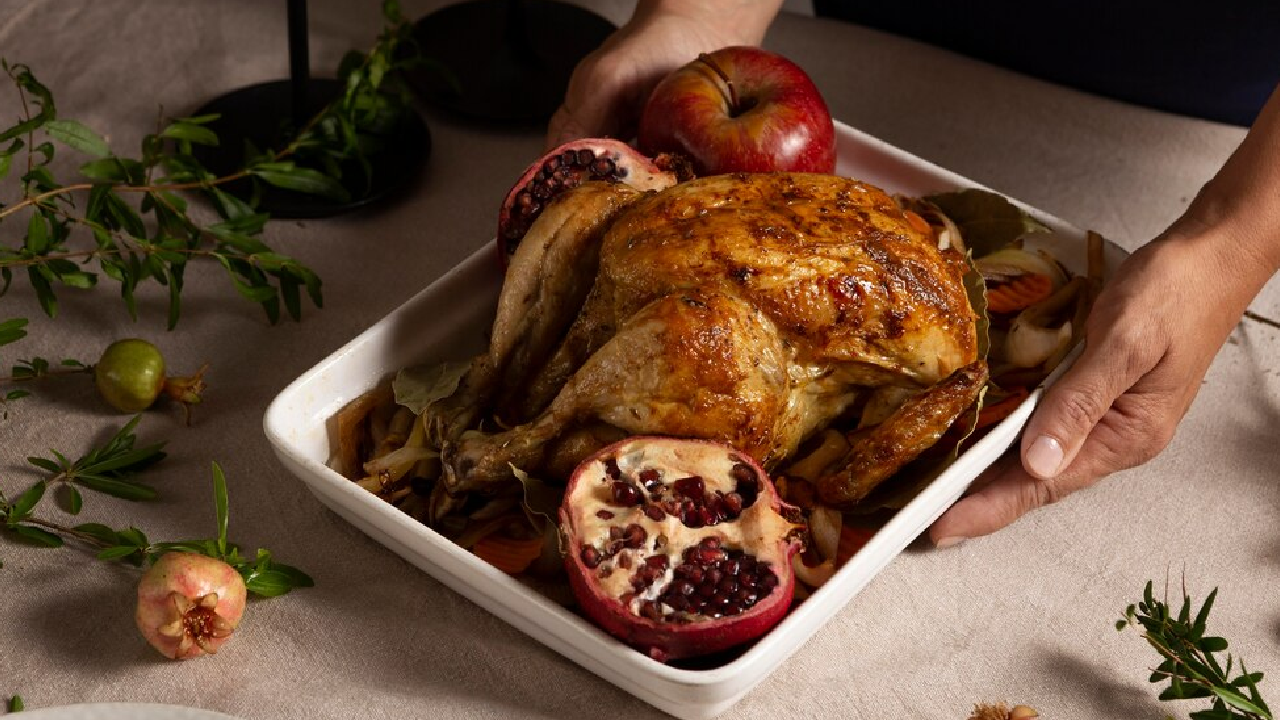Among the most enduring is the battle between white meat and dark meat turkey. What may seem like a simple choice of meat on the dinner plate can quickly become a passionate discussion, dividing family members and friends across the country. Each type of meat has its unique qualities, and, surprisingly, there’s more to this debate than just flavor preferences. So, which one is truly better: white meat or dark meat?
According to a YouGov poll in 2023, 43% of Americans favor white meat, 22% prefer dark meat, while 25% enjoy both types. However, beyond taste, health considerations often come into play, as each variety offers distinct nutritional benefits. To help you navigate the nuances, we’ll explore the pros and cons of each, the nutritional breakdown, and insights from dietitians.
So, this Thanksgiving, you can make an informed choice that aligns with both your taste and health goals.
Table of Contents
Why Turkey is Central to Thanksgiving
Thanksgiving dinner, for most Americans, isn’t complete without a turkey on the table. Turkey has been celebrated as a holiday staple for centuries, thanks in part to its role in the first Thanksgiving. A lean meat rich in protein, vitamins, and minerals, turkey is both flavorful and nutritious, making it an ideal choice for a holiday meal. Unlike other meats, turkey appeals to a wide range of tastes due to its distinct cuts – white meat from the breast and wings, and dark meat from the thighs and legs.
What Sets White Meat and Dark Meat Apart?
Before diving into nutritional values, it’s essential to understand what makes white meat and dark meat distinct. The color difference comes from the myoglobin content, a protein that helps transport oxygen to muscles. Muscles that are used more frequently, like the legs and thighs, have higher myoglobin levels, giving them a darker color. Conversely, muscles used less frequently, like the breast and wings, have lower myoglobin, resulting in the lighter color of white meat.
The Nutritional Breakdown: White Meat vs. Dark Meat
When it comes to nutrition, both white and dark turkey meat have unique benefits. Understanding the nutritional breakdown of each can help you make a decision based on your health priorities.
White Meat: Leaner but Packed with Protein
White meat, primarily found in the breast of the turkey, is known for being low in fat and calories. According to the USDA, a 3-ounce serving of skinless roasted turkey breast contains approximately:
- 125 calories
- 1.8 grams of fat
- 25.6 grams of protein
White meat is an excellent source of protein, essential for muscle repair, immune function, and cellular regeneration. It also contains B vitamins, including niacin (B3) and riboflavin (B2), which help convert food into energy and support cellular health. Additionally, white meat is high in phosphorus, a nutrient vital for bone health.
White meat is favored by those looking for a low-calorie, low-fat protein source. Its minimal fat content makes it appealing to those managing their cholesterol or heart health.
Dark Meat: Rich in Flavor and Nutrients
Dark meat, sourced from the turkey’s thighs and legs, has a slightly higher fat and calorie content than white meat. However, it also offers distinct nutritional benefits. A 3-ounce serving of skinless roasted turkey thigh contains:
- 140 calories
- 5.1 grams of fat
- 23.5 grams of protein
While dark meat has more fat, it provides essential nutrients like iron and zinc, crucial for immune function and cellular growth. It’s also higher in myoglobin, which, besides affecting color, aids oxygen transport within the muscles. Dark meat contains a bit more selenium, a powerful antioxidant that protects cells from damage.

Health Considerations: Choosing Based on Your Goals
Both types of turkey meat are excellent sources of lean protein, making them healthier options than red meat. However, they do have slight differences in fat content, flavor, and nutrient density. Here’s how these differences might affect your health choices:
- Calories and Fat
If calorie count and fat intake are your primary concerns, white meat is the better option. Dark meat has nearly twice the fat of white meat, but the difference is minimal – only about 3 grams per serving. However, for those watching their saturated fat intake due to heart health, this can be a significant factor. The fat content in both types is mostly unsaturated, but dark meat does contain a slightly higher amount of saturated fat. - Protein and Muscle Building
Both white and dark meat offer substantial protein content, though white meat has a slight edge with about 2 grams more protein per serving. For individuals focused on muscle repair and recovery, either type is a great choice. - Micronutrient Density
Dark meat is higher in minerals like iron, zinc, and selenium, essential for immune support, energy metabolism, and cellular function. White meat, on the other hand, is richer in B vitamins, such as niacin and riboflavin, which are crucial for energy production and cellular health. Those with specific nutrient deficiencies or needs may prefer one type over the other. - Flavor and Texture
Dark meat’s higher fat content gives it a richer, more robust flavor, which some people prefer, especially when paired with Thanksgiving sides. White meat, while leaner, is often considered drier and less flavorful. However, it tends to complement traditional Thanksgiving dishes well, especially when paired with gravy, cranberry sauce, or stuffing.
What Dietitians Say: Enjoy Both in Moderation
Dietitians often recommend a balanced approach to Thanksgiving dinner. Registered dietitian Maggie Lyon suggests filling your plate with a variety of foods, including both white and dark meat, and accompanying them with vegetables, whole grains, and a bit of everything you enjoy. Another dietitian, Caroline Susie, emphasizes not depriving yourself on Thanksgiving. While Susie opts for skinless turkey to reduce fat content, she encourages savoring the holiday foods without focusing too heavily on calorie counting.
Myth Busting: Is White Meat Healthier Than Dark Meat?
While white meat is lower in calories and fat, neither type of turkey is necessarily “healthier” than the other. The differences are small, and each type has its strengths. Ultimately, your choice should depend on personal health goals, taste preferences, and the balance of foods on your plate.
